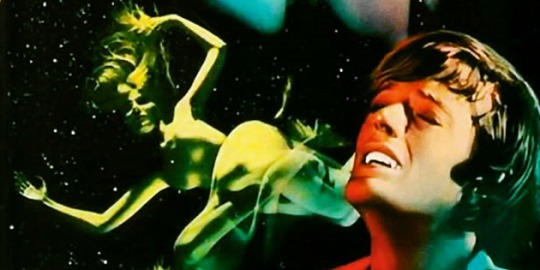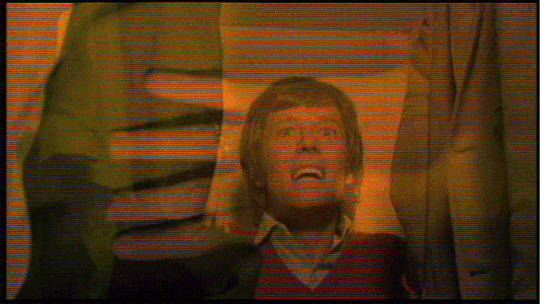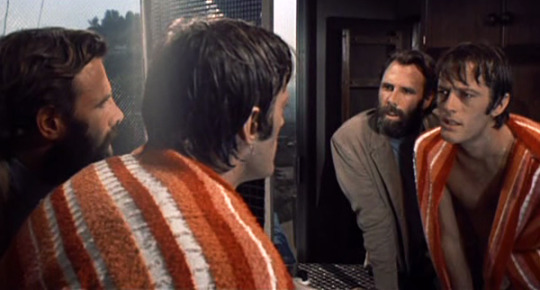The Pragmatic Rebellion of Roger Cormans The Tripby Jessica Ritchey
By Yasmina Tawil

Pre-production for a movie rarely involves dropping acid, yet in the spirit of due diligence, producer/director Roger Corman spent a weekend in Big Sur, California doing this essential prep work for his 1967 odyssey The Trip. At the time, Corman was one of the main forces behind American International Pictures (AIP), a powerhouse independent that filled drive-ins and neighborhood theaters with titles as diverse as Viking Women vs. The Sea Serpent and The Wild Angels. Corman had originally studied to be an engineer, and brought that background into the movies: Just as an engineer puzzles over objects to see if they can work more efficiently, Corman looked at B-movies and figured out how to produce them on even more stripped-down budgets and schedules.
It also meant that if he was going to make a movie about LSD, he had to try it first. Hippies, and their acid trips, were a subject that were often overly romanticized or condemned. Corman’s pragmatic remove from the counterculture and its recreational drugs runs through the finished film. And it means The Trip has aged a good deal better than many countercultural curios like Skidoo or The Strawberry Statement. Corman sympathizes with the youthful impulse to rebel, but he’s also keenly perceptive about what happens when rebels age into their 30s, and the growing pains, in work and in love, are more acutely felt. Expectations about careers and relationships that would sustain and fulfill them start coming apart at the seams.

The film was written by Jack Nicholson, who had collaborated with Corman throughout much of the decade, most notably in Little Shop of Horrors and The Terror. Nicholson was going through his first divorce, and that experience shapes the story. Peter Fonda’s protagonist is a director of commercials, unhappy about his recent separation from his wife. He’s feeling a restlessness he can’t name. He meets a friend, played by Bruce Dern, who takes him to an outrageous pad festooned with beaded curtains and paisley murals. Dennis Hopper turns up as the would-be acid guru who oversees the place. Dern and Hopper offer Fonda an escape of a different sort, with the attendant warnings of what a bad trip can entail. Suitably intrigued, Fonda gives it a try. The rest of the film is a hallucinatory journey of Fonda wandering Hollywood with the audience sharing his visions—visions that, in a very Corman touch, reuse costumes and sets from other AIP productions.
There’s an eerie beauty to Fonda’s hallucinations. They flow with their own dream logic, from carnal bacchanalia to eerie flashes of himself under torture or about to be executed. Their meanings are at times too obvious and at others intriguingly opaque. And they have a cyclical quality. However far afield the drug takes him, he always winds up facing a woman, played by Susan Strasberg, who’s his estranged wife. Fonda keeps seeking a permanent union with this dream woman he cannot have. LSD can open the frontiers of his mind, but it cannot mend a relationship that has fallen apart. And it can’t replace the humdrum daily labor of maintaining a long-term relationship.
Corman’s involvement keeps the film comfortably balanced between astute observation and youthful rebellion. Corman is clearly sympathetic to the yearnings and mistakes of the Haight-Ashbury crowd while at the same time having a foot in the responsibilities of the mainstream culture. Crucially, Corman was a decade older than most of the actors in the film. He wasn’t old enough to be “establishment,” but old enough to understand that youth burns so brightly because it’s so short-lived. Because of that understanding, the film never falls into moral scolding or Reefer Madness-like hysteria. When Fonda’s trip starts to crack and trap him in terrifying, inescapable images, it’s not presented as the wages of sin so much as suggesting the choices we make in life carry risks. The transcendent rarely strays too far from the terrible, and only with the latter can you truly appreciate the former.

The Trip is also an example of how wide the cultural field of reference was at the time, with porous walls between high and low art. The arthouse borrowed from the drive-in and the drive-in returned the favor. In one sequence, Fonda wanders through a foggy, candy-colored carnival right out of Fellini’s Juliet of the Spirits. The images shimmer with colors baked in the Southern California heat. The Trip is a film about a culture on the verge of a crack-up and the costs of that newfound freedom. It’s a film about the importance of feeling at home in your own life and your own skin, lest you attempt to “…run away to try to find oneself, and find no one at home,” as the writer Joan Didion warns. It belongs utterly to the ‘60s, yet there’s something for now in it. The struggle to reconcile the life we have with the possibilities waiting, either in a new city or a spiked sugar cube, is always with us. And the executioners and the maidens in The Trip underline how we chase meaning and purpose in our lives, only to find something that appeared concrete turned out to be nothing more than a trick of the light.


